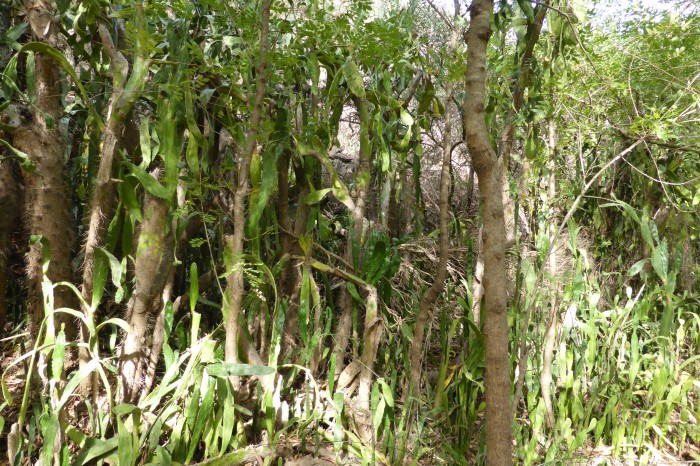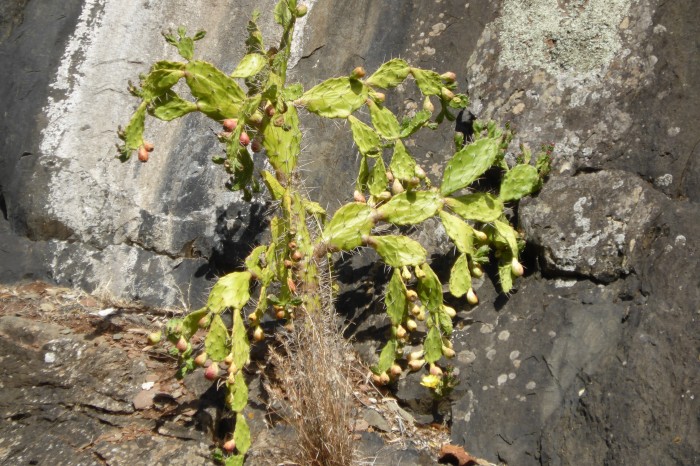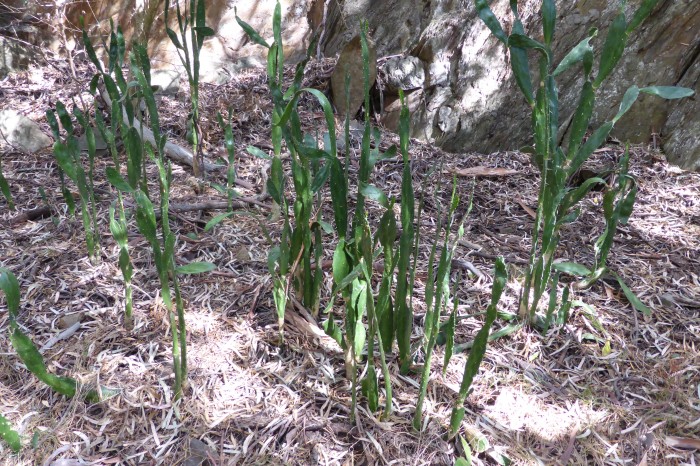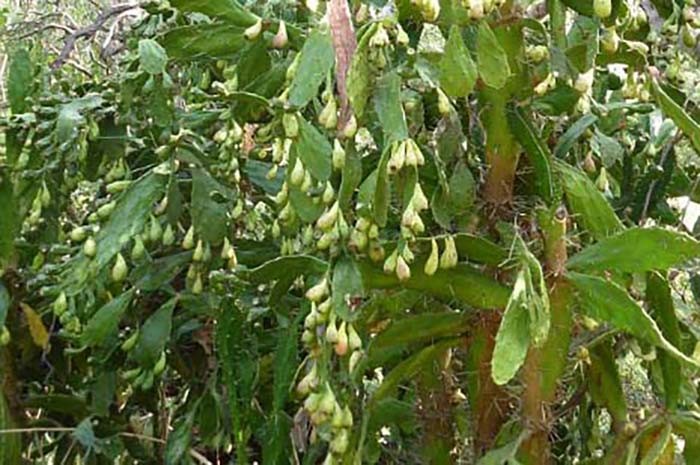The Onkaparinga River National Park contains some of the most scenic and dramatic country for walking in South Australia and yet it is located on the edge of Adelaide’s metropolitan area. The Park consists mainly of the 15km of river valley upstream of Old Noarlunga and during a recent Adelaide Bushwalkers walk down the valley, it came as a bit of a shock to see that it is being colonized by prickly pear cactus.
Something obviously needs to be done before the situation gets worse and so, with that in mind and on behalf of ABW members, I approached the Onkaparinga River National Park (ORNP) authority to see what might be done and how we might become involved. As it turns out, the Park has just started to address the problem and to this end, has started breeding cochineal beetles hopefully for release later this year.
For a number of reasons, a combined approach using biological control together with a ‘drill and poison’ program is the surest and most effective way to achieve eradication and this is where ABW could become involved. In fact, the ORNP expressed great enthusiasm about our potential involvement because, as it was explained to me, its main concern with volunteers is injuries and they see us as people accustomed to and able to handle, the sometimes rugged terrain. I hope that ABW would like to play an important role in cactus eradication in the Park and with this in mind, such a project has been drawn up.
The Problem Defined
Prickly pear was recorded during a comprehensive botanical survey of the Park just over a decade ago and in which over 400 native species were recorded. The cactus has proliferated and spread since then but there are good reasons to be optimistic about its eradication. While 15km of river valley may sound daunting, the cactus is restricted to the immediate vicinity of the river and this means that we are dealing with 110 – 150 hectares (15km x 75-100m) of the 1260ha Park (8% of the total area) upstream of Old Noarlunga. In contrast with the club’s ongoing Gum Creek cactus program, the new project will cover around twenty times less area and it will not involve the time and personal needed for the grid pattern searching required for Gum Creek.
The cactus is relatively uncommon in the upstream quarter of the Park but increases further downstream and it appears to primarily occur in three different situations. These are as isolated plants, as clusters of young plants and in dense patches of mature plants, up to 3m tall and often tangled with other vegetation. These patches exist mainly in the downstream two thirds of the Park and would be extremely difficult to treat by poisoning and they will be the main target of the biological control program.
The Proposed ABW Project
For the purpose of the ABW project, the 15km of river has been divided into six sections according to the location of access and egress points from the roads that run either side of the Park. Each section will be dealt with in turn starting from the eastern boundary of the Park and working downstream.
Our role will be mainly to poison all of the stand-alone cactus large enough to be drilled and to collect very small plants too small to poison. Another tactic and a new approach will be dealing with cactus too small for poisoning but too large to collect. These will be bagged and sealed and left to rot in situ and the locations recorded for the bags to be removed at a later date.
The overall aim of our involvement will be to treat as many cactus as possible on each day and we will spend only minimal time deliberately searching for very small plants. It will be a far better use of resources to treat these plants later on once they become large enough to be easily seen but before they are mature. Apart from poisoning, collecting and bagging cactus, it is possible that we may also become involved later on in the distribution of cochineal beetles in the less readily-accessible parts of the gorge.
For the project to progress at a good rate, it will need two teams of three and these will consist of a driller, a poisoner and a GPS recorder. The poison will be a commercial preparation of glyphosate. The teams will work the same length of river, one to each bank and staying in contact with each other. Overall, the project will consist of four working bees commencing in late May 2015 and concluding in November 2016 as shown in the table below. With the possible exception of May this year, it is anticipated that the river bed will be largely dry during these dates.
The major purpose of the two-day working bee in May this year (apart from just getting the job started which will be good) is to refine our methods and get a better idea of the rate of progress we are likely to make. We are dealing with the Drooping Prickly Pear (Opuntia vulgaris) which has pads and immature plants, quite different from the Wheel Cactus (Opuntia robusta), and this first working bee will give us experience in dealing with these plants and also allow us to assess plant mortality before the first of the four- day working bees commencing in November.
In the program, you can volunteer for any day or any number of days of your own choice and be rostered onto one of the two teams. Unfortunately, volunteering for part-day sessions is unlikely to be workable. If staying for more than one day, you will have the choice of either returning home each evening or camping at Clarendon (behind the sports ground and Bowling Club). There is a public BBQ facility available or dinner could be had at the Royal Oak Hotel. Arrangements will be made so that people staying overnight at Clarendon will have access to showers.
l hope it is not being overly optimistic to predict that the basic poisoning program will be completed by November 2016 although follow-ups on a much smaller scale will be required for some years to come after that.
ABW has offered to play a fairly major role in the ORNP Cactus Eradication Program and I hope you agree that it will be an exciting and very worthwhile project to become involved with. If you do volunteer, you’ll be working in a terrific environment and in a program likely to have a successful longer term outcome. And apart from all that, it should also be a lot of fun! It would be great to see you there!
Program Dates
2015
2016
[the_ad_group id=”142″]






Comments (0)